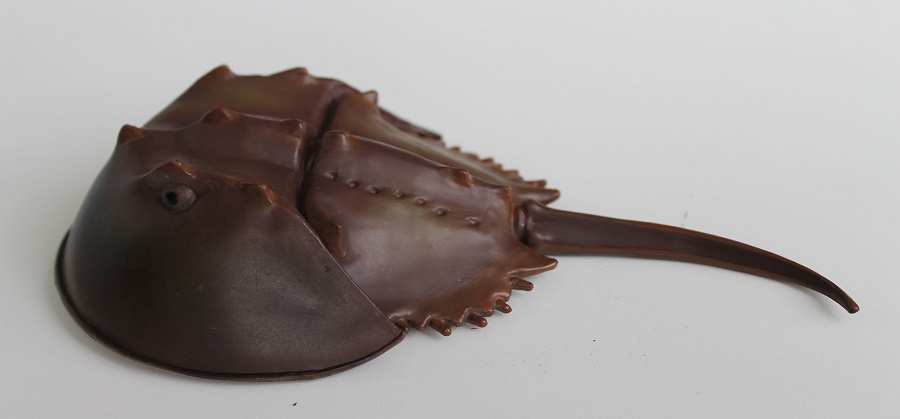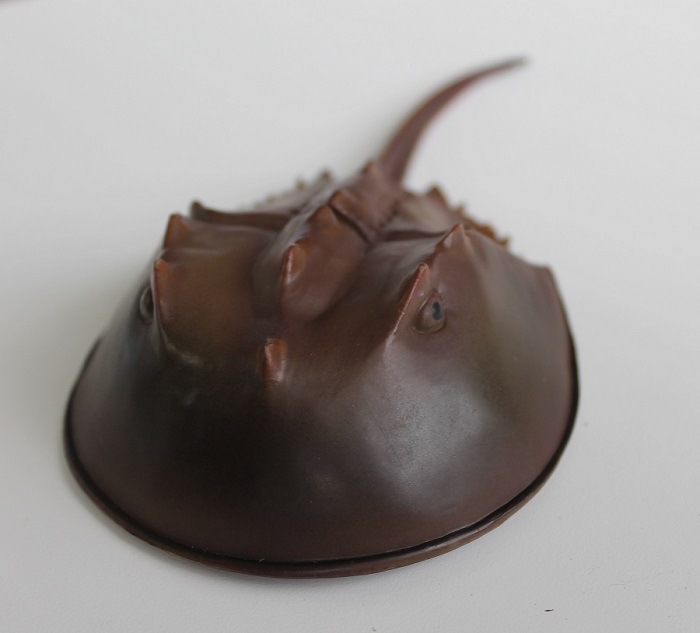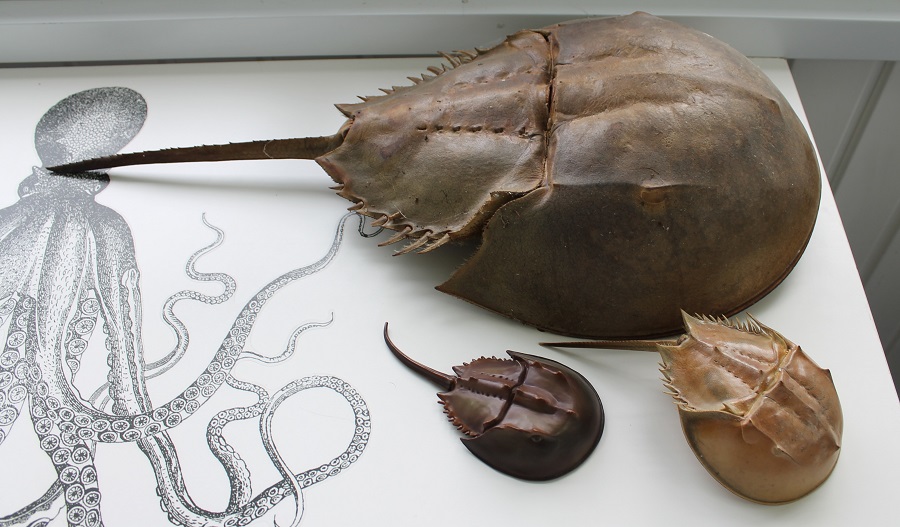Horseshoe crabs of the order Xiphosura have been swimming the Earth’s oceans for the last 445 million years, and as a veteran writer for the Dinosaur Toy Blog, it only seemed appropriate that my first review for the ATB be on something as old (or older than) the subjects I’m used to writing about. Horseshoe crabs are popularly labeled as “living fossils,” implying that they haven’t changed at all in millions of years. This is not true, though they’ve changed very little as a group, the extant horseshoe crabs are not the same species as those from the Ordovician. Those from the genus Limulus, like this fellow, only date back to 148 million years ago, just a youngster!

Despite their name horseshoe crabs aren’t crabs at all, instead they’re most closely related to arachnids and according to one recent study might actually be arachnids. Comparing them to something like the extinct eurypterids (sea scorpions) makes this relationship easy to see. Although several horseshoe crab families existed in the past all four extant species belong to the Limulidae family with the Atlantic horseshoe crab (Limulus polyphemus) being the species represented by the toy we’re looking at.

The toy measures 6.5” (16.5cm) while L. polyphemus can reach up to 24” (60cm) in the case of large females, making the figure roughly 1:3.5 scale on average. Dorsally, the toy is painted in a flat, single, brown color tone and although horseshoe crabs could be described as being “brown” some form of shading and color variation would have been appreciated and more realistic.

The model appears to depict a young animal with three prominent spiny ridges down the back, in older individuals these ridges smooth out to a large degree. Younger horseshoes are certainly more prone to predation and the extra spiny protection is needed, as adults there aren’t many animals that eat the well armored horseshoes, but some do fall prey to sharks and sea turtles. Humans take their share as well, harvesting them for use as food, fertilizer, and for draining a percentage of their blue blood for medicinal purposes only to release the animals later.

Although horseshoe crabs have 9 eyes both above and below their body, only the two large compound eyes are especially obvious on the living animal and present on this model. Six pairs of appendages are present on the underside of the toy and very nicely detailed. These are located on the “head” of the animal, or more accurately the prosoma. On the underside of the spiny opithosoma, or second body segment, are the book gills, used in respiration and these are painted a lighter shade of mottled brown, the only variation in color on the toy. On the topside of the opithosoma are two rows of what appear to be pores; these are the animal’s muscle insertion fossa. The long tail, or telson, is sculpted with a triangular cross-section, a feature of L. polyphemus specifically. The telson on horseshoe crabs is stiff but prone to warping on the toy.

Overall this is an accurate and faithful reproduction of one of the most fascinating and unique creatures on the planet. Although a better paint job would add extra realism to the model there is little to complain about otherwise. This is a fantastic addition to any collection, affordable and easy to find, and a great educational tool as well.
Disclaimer: links to Ebay and Amazon on the AnimalToyBlog are affiliate links, so we make a small commission if you use them. Thanks for supporting us!




Good figure, I’m impressed with the detail on the underside.
I like that Gwangi mentioned the blood being used for medical testing. The lab I work in performs that test. It tests for B-D-glucan, to diagnose chronic fungal infections. 🙂
I didn’t know about this model! Maybe I’ll add it to my wishlist since it’s something of a living fossil.